Camilo José Cela in his book ‘Viaje a la Alcarria’ put Brihuega (Guadalajara) on the map, a small village located less than an hour from Madrid that has the old Royal Cloth Factory, an 18th century building that has become the jewel of the village.
In these bucolic surroundings bathed by the province of Guadalajara, you will find Castilla Termal Brihuega, a 5-star spa hotel. Along with four others, it belongs to the first Spanish chain of spa hotels that are committed to the reconstruction of old buildings located in rural villages. ‘We are looking for unique and historic buildings in natural surroundings with a water component in all our hotels, oriented towards the concept of wellness,’ explains Roberto García, CEO of Castilla Termal.
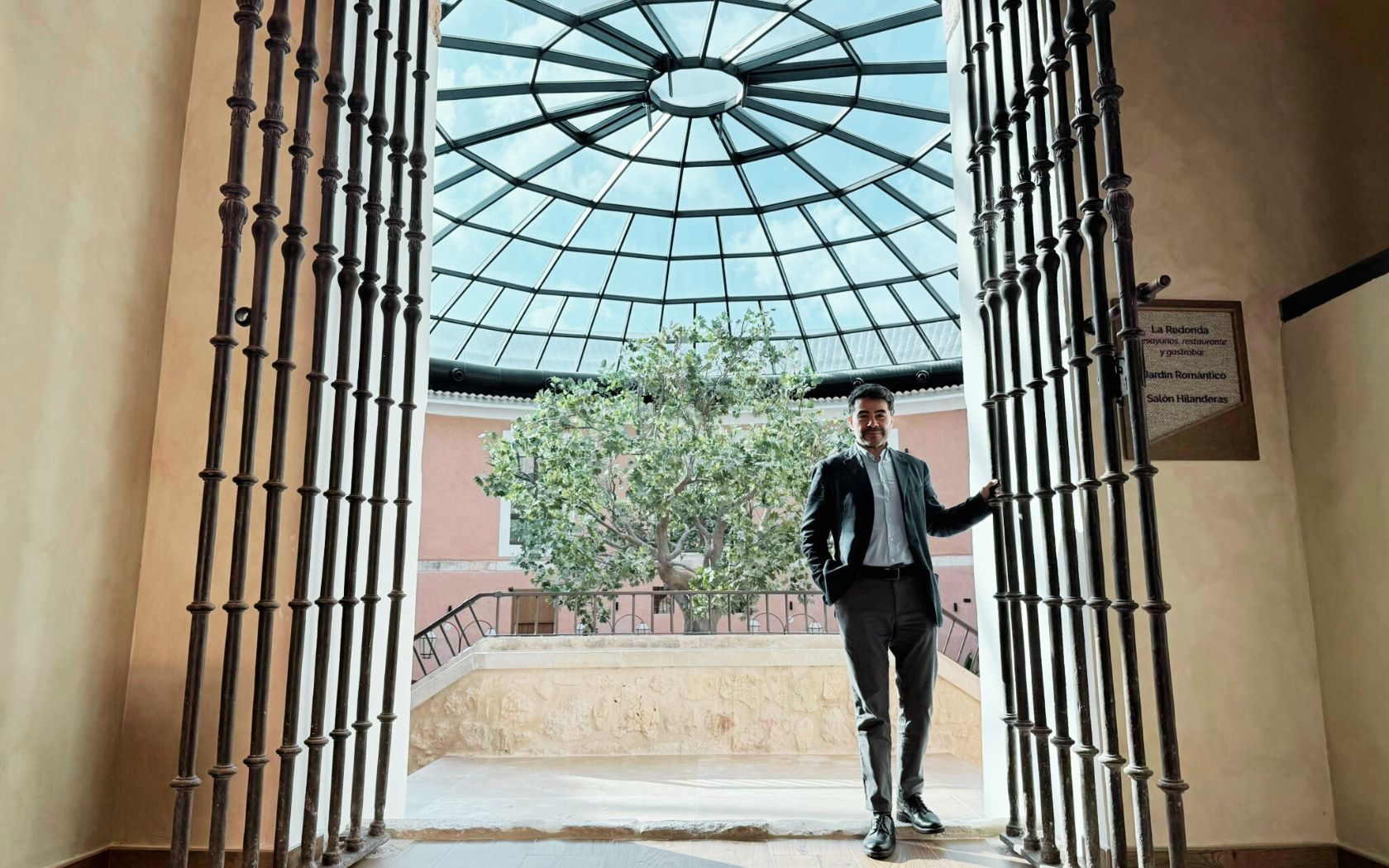
Roberto Garcia at the Castilla Termal Brihuerga Hotel
The hotels are located in rural areas even though they are not considered rural. It is a concept of natural luxury in small towns where the hotel is the economic engine of the town, both for the inhabitants of the area and for the small local producers. According to Roberto, ‘we are committed to social and economic sustainability in the rural areas where we work to generate value in the environment’. For this reason, in each of the hotels they develop protocols that are adapted to the history and peculiarities of the area. ‘With the arrival of Castilla Termal in Brihuega, we have generated more than 70 direct jobs and approximately 100 indirect jobs’, he explains.
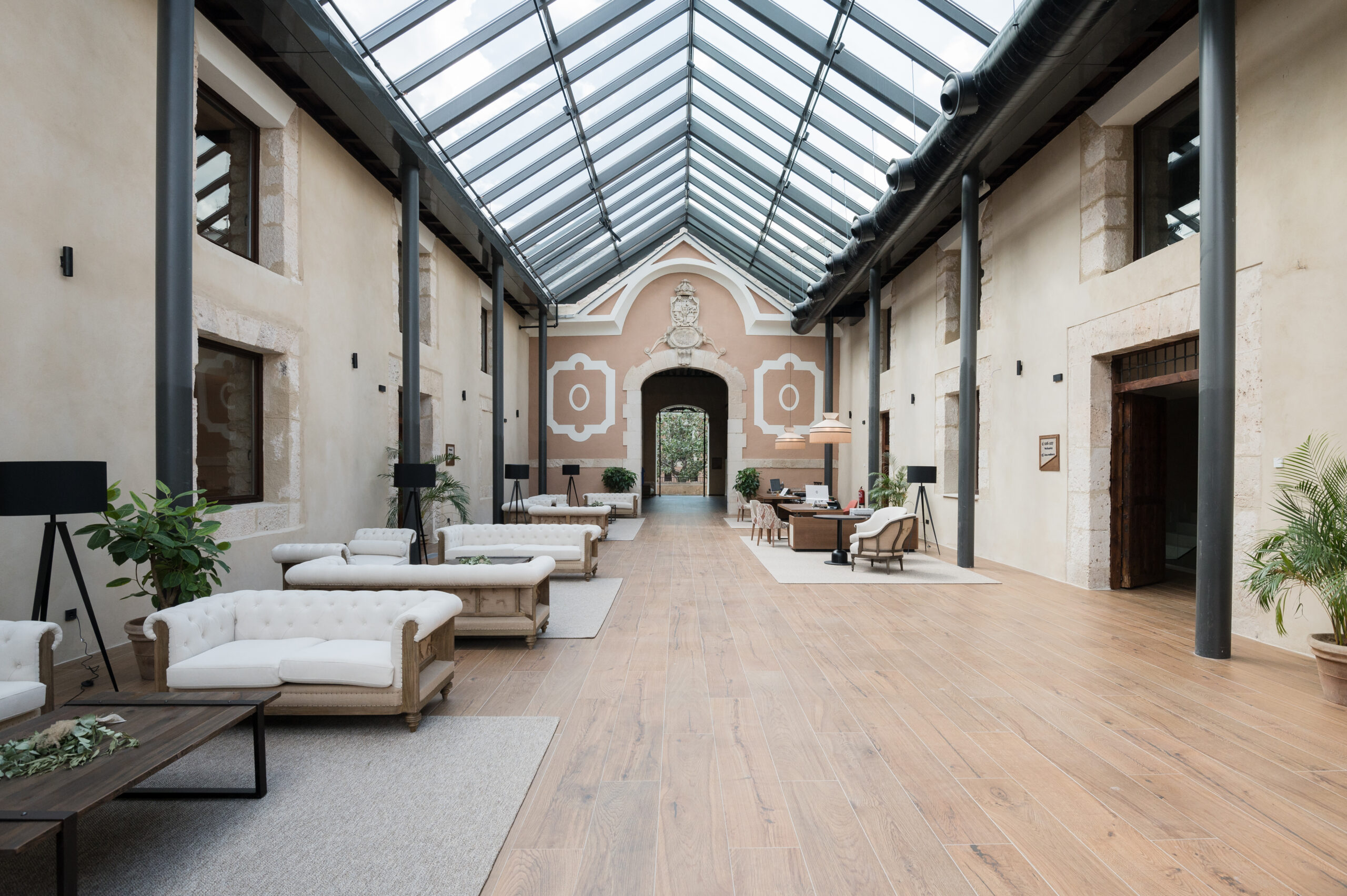
Entrance of the hotel Castilla Termal Brihuega.
Castilla Termal Brihuega: the fifth hotel to open in 2024
The round building was built in 1750 by Fernando VI and is a magnificent example of 18th century industrial architecture. This building was used as the Royal Cloth Factory with 66 looms conceived as a self-sufficient community for its workers. With schools, housing and workshops, the factory was an innovative project for its time. However, with the crisis of the 19th century, production ceased and the complex fell into disuse, although its gardens were preserved.
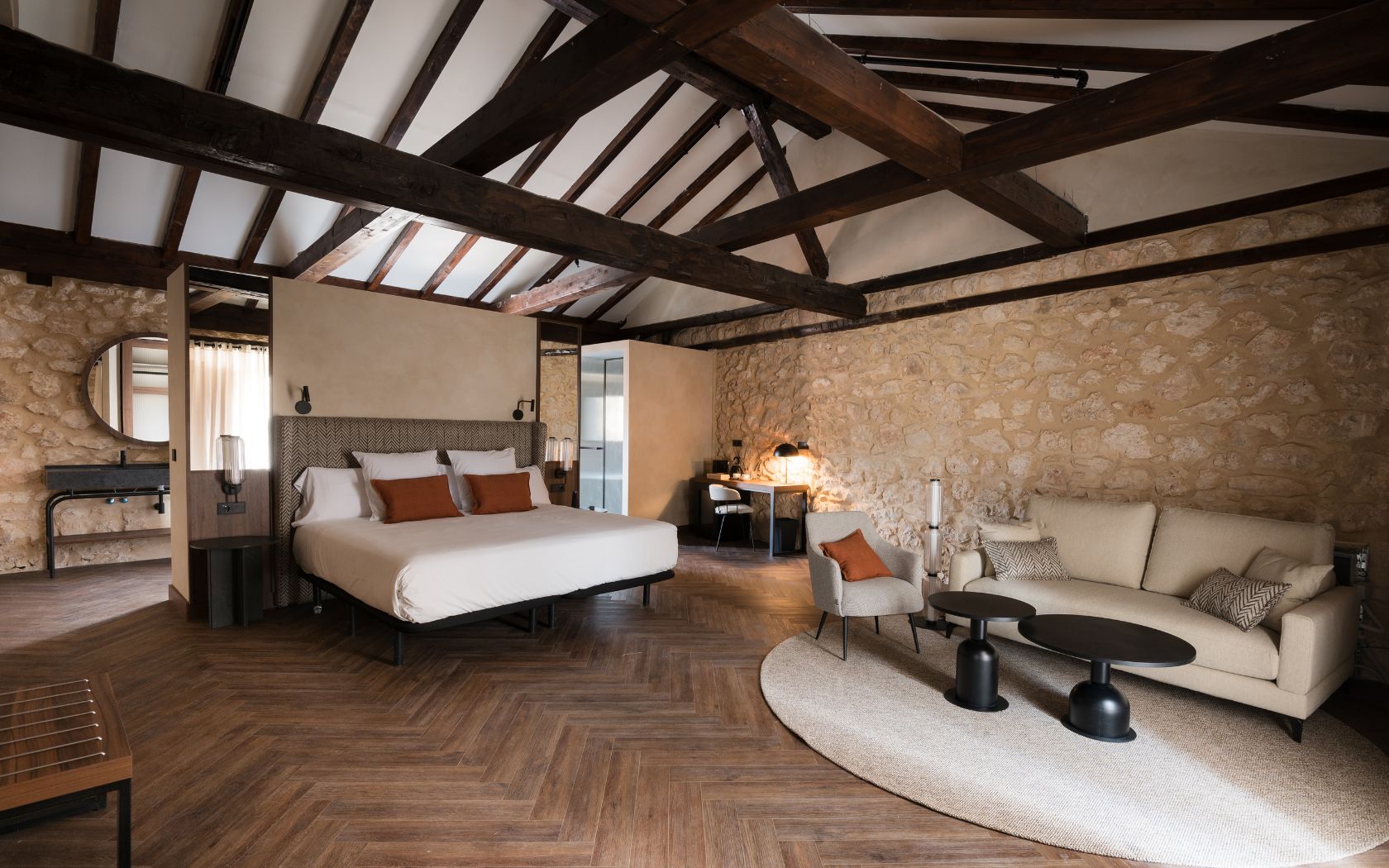
Suite Room.
The restoration was a challenge for the interior designer María Zárate, founding partner of BLAKinteriorismo, who led the refurbishment of the old factory of Castilla Termal Brihuega, where she prioritised the conservation of the original elements while maintaining the natural materials such as wood, earth and stone, preserving the exposed beams.
Wellness Area: treatments designed with local resources from the area
The spa offers experiences designed with local resources from the area, such as treatments with honey and lavender, or massages with fabrics that connect body and mind.
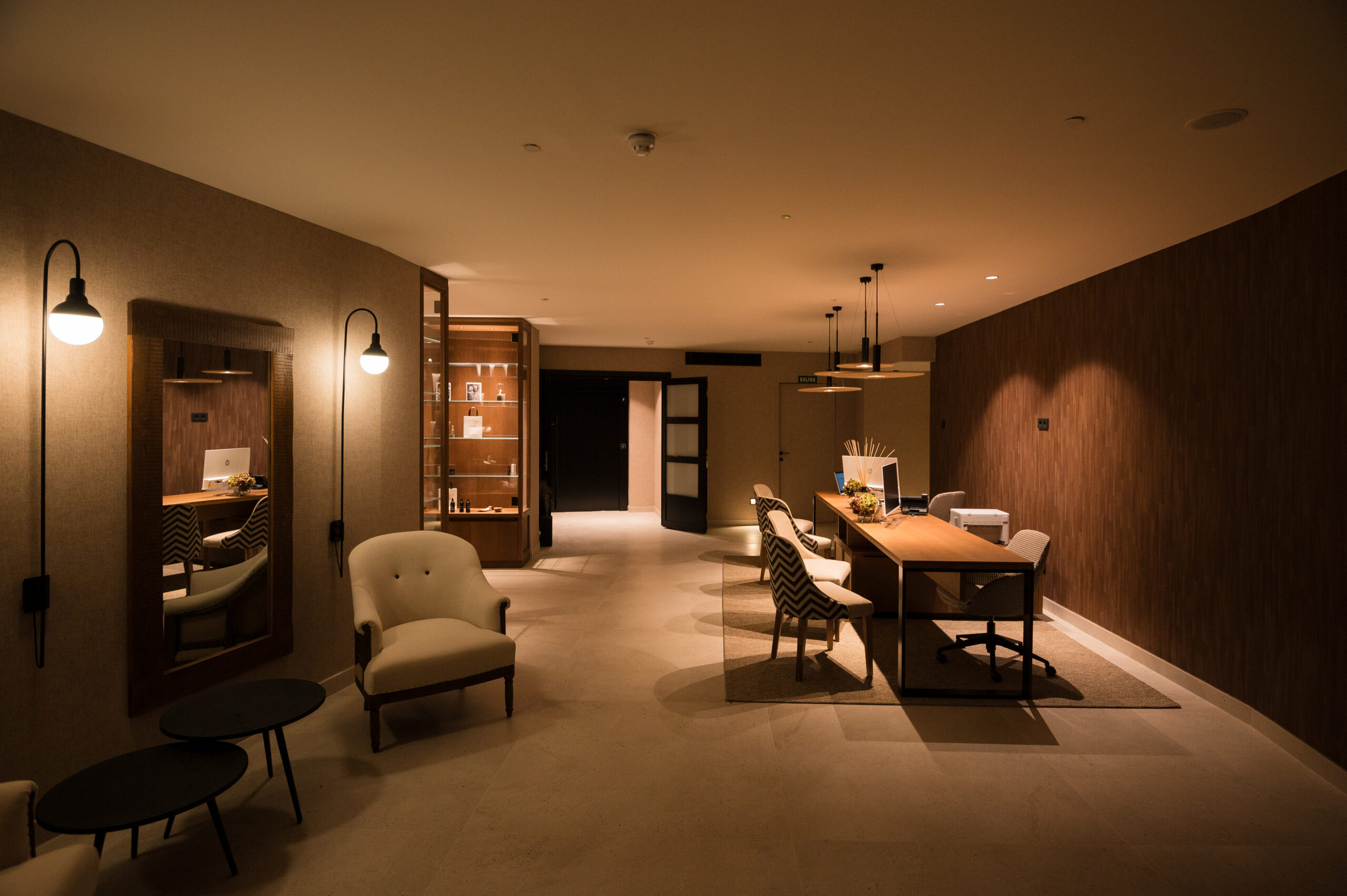
Reception Spa area.
They have also created their own line of body cosmetics from Castilla Termal, which is made with mineral-medicinal thermal water from Olmedo and has the ACENE seal, certifying it as organic, natural and vegan cosmetics. These products can be found in the rooms and in the Wellness area where they can be purchased.
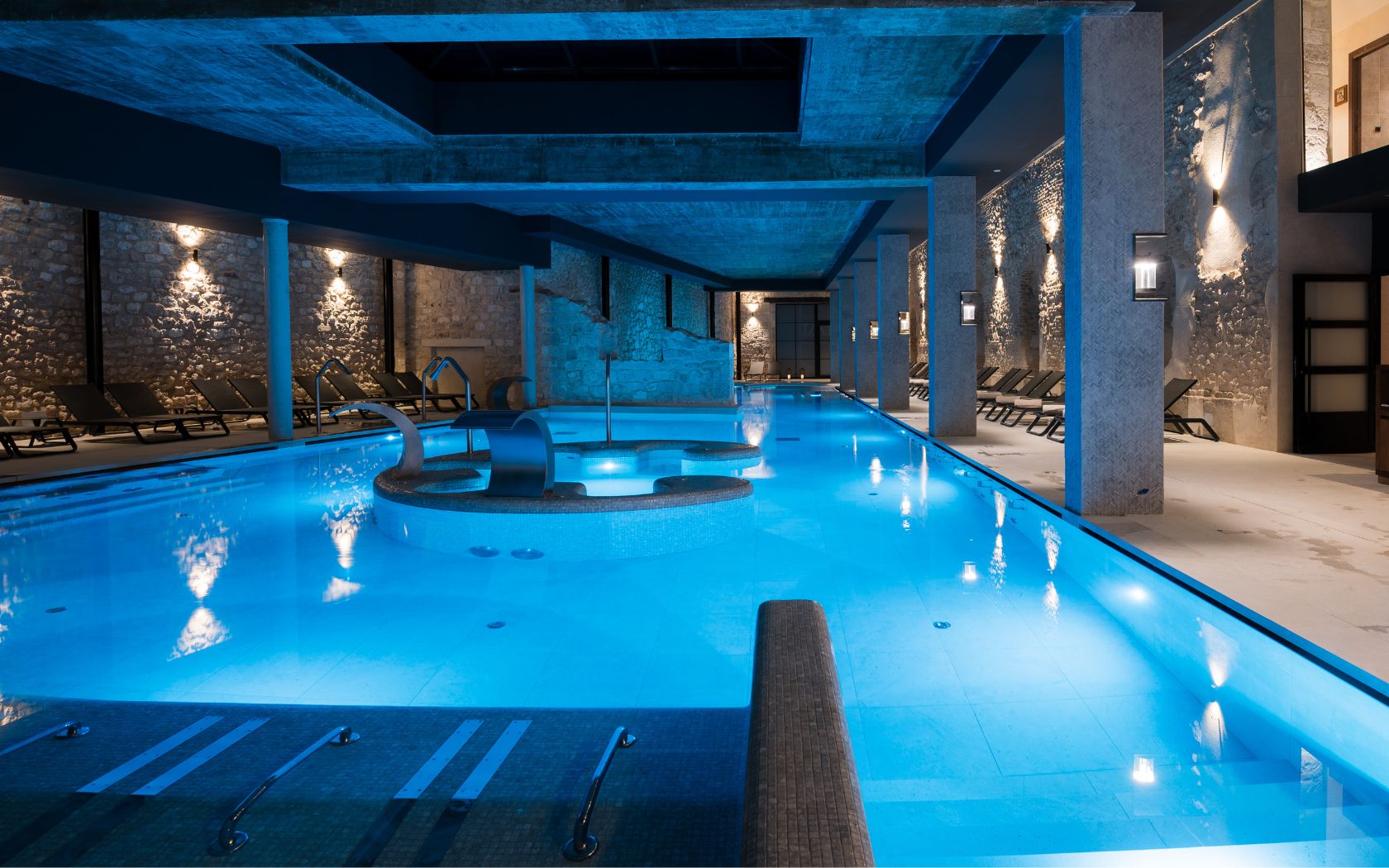
Spa area.
With a focus on sustainability, Castilla Termal has developed a comprehensive water management plan that includes grey water recycling, water reuse for irrigation and WC and low consumption optimisation. This project not only reduces the environmental impact, but also contributes to the preservation of water resources.
Converso: the star wine made in-house
Gastronomy is one of the fundamental pillars of Castilla Termal and in Brihuega, they offer a menu composed of traditional dishes made with seasonal products that is complemented with a careful selection of wines, among which Converso stands out, a Ribera del Duero wine made in-house from a selection of the best grapes from the high areas of the vineyard, aged for 12 months in French and American oak barrels.
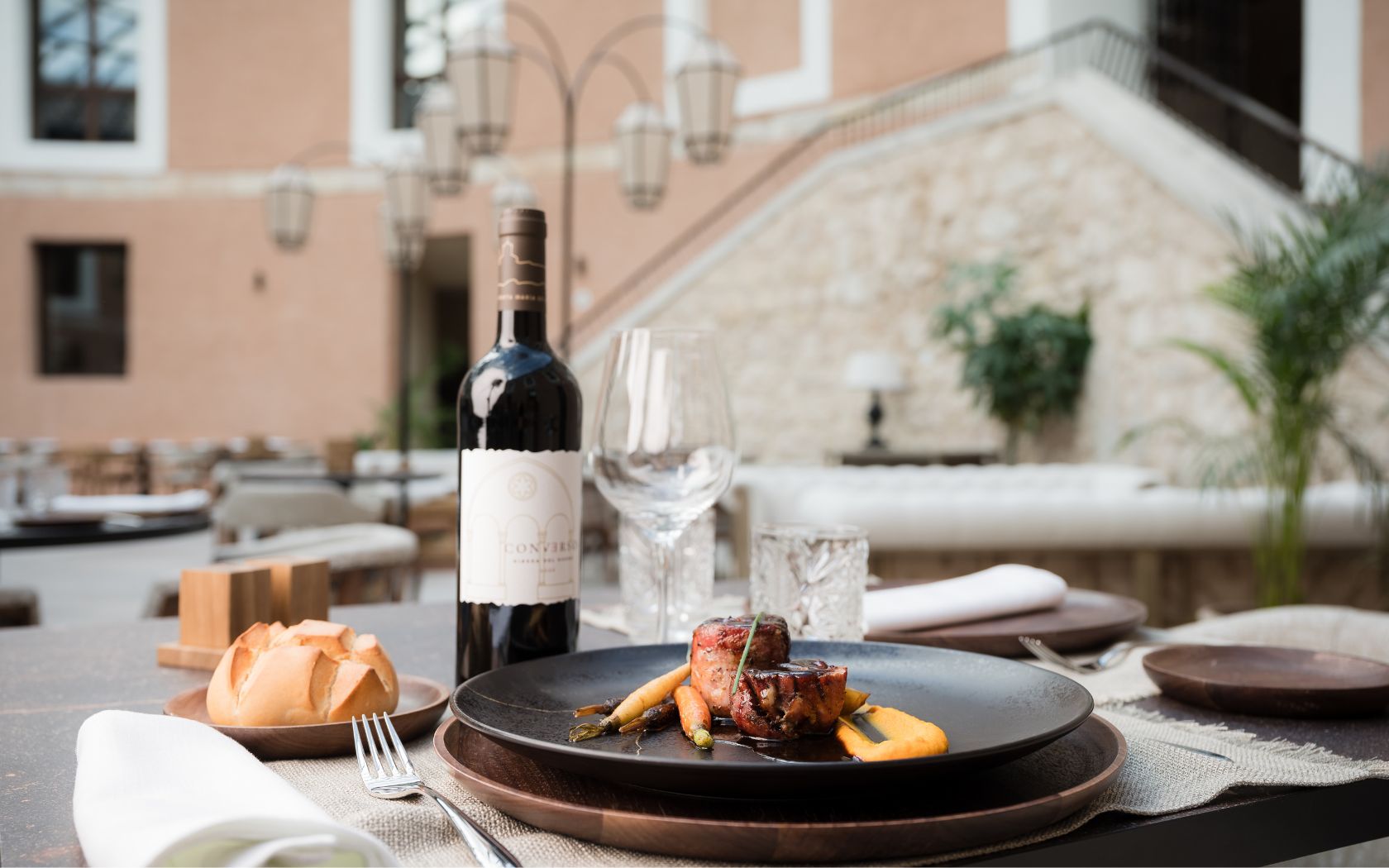
Restaurant.
The restaurant and cafeteria are located under its dome, the heart of the building and one of the most special areas of the building.
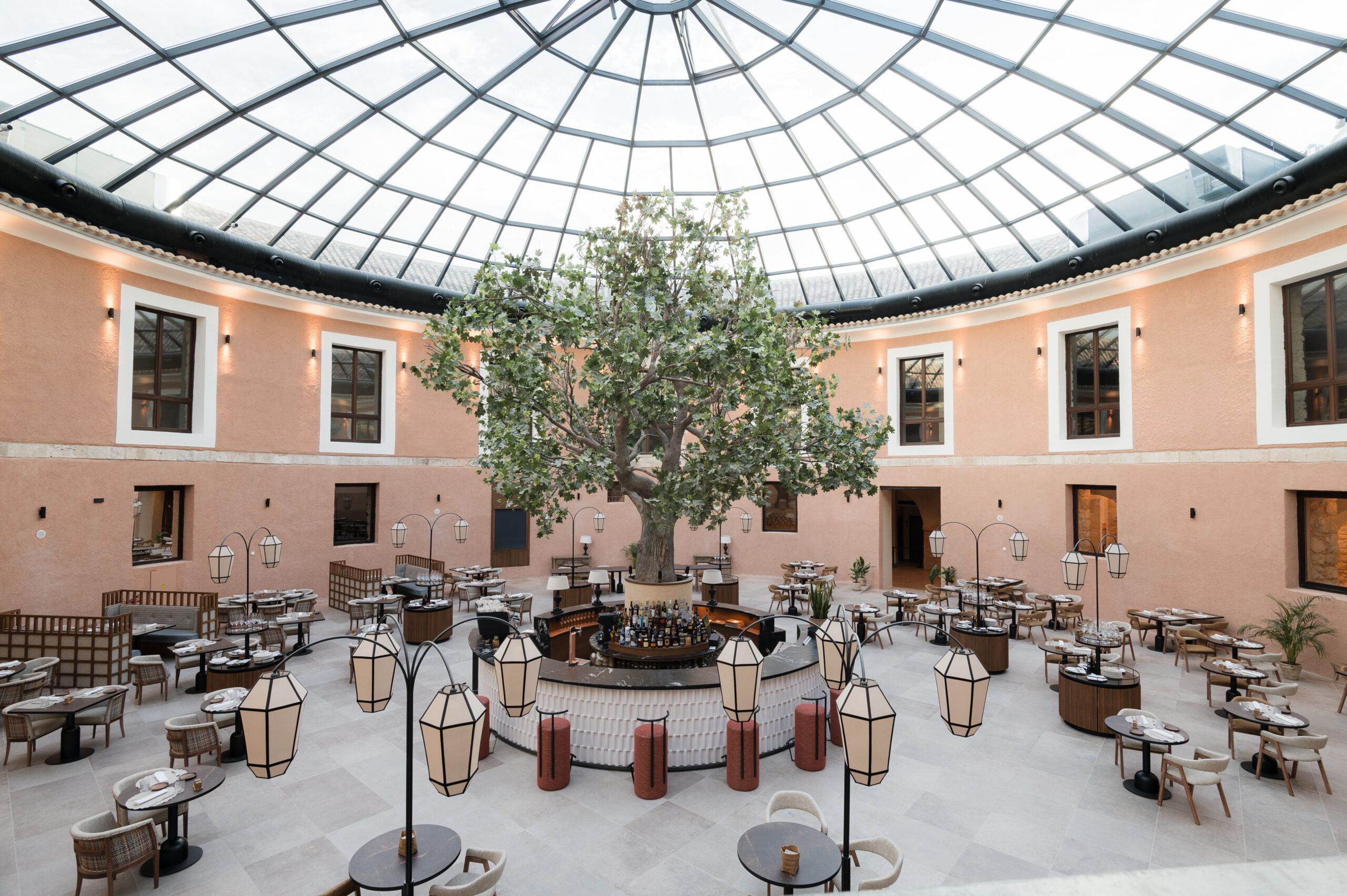
La Redonda gastronomic area.
What to discover in Brihuega
Nestled in the valley of the river Tajuña Brihuega is a hidden treasure that first appeared in the Middle Ages with the name of ‘castle on the rock’, it is also known as the Spanish Provence as one of the main crops is lavender with over 1000 hectares of cultivation and in late June and July when it reaches its peak the hotel offers its guests the ‘lavender experience’, a picnic surrounded by the intense aroma of lavender where the beauty of the landscape melts into the sunset.
The Puerta de la Cadena is one of the 5 gates of the wall that surrounded the town of Brihuega where there is a plaque commemorating Camilo José Cela.
Near the hotel, you can visit the Museo de la Miel de La Alcarria, the fountain of the twelve spouts, also known as the ‘blanquina’ fountain because it is where the women of the village used to wash their clothes and dishes.
The street of Camilo José Cela, where the cheese factory ‘la flor de Brihuega’ is located.
The Arab caves which predate the Arabs, there are Visigothic arches and there were 9 km of caves and now only 700m. remain and in the Plaza del Corso the market used to be held and nowadays the market is located there.
The Church of Santa Maria de la Peña is next to the Castle of Piedra Bermeja and is one of the most romantic places in Brihuega. It was built at the beginning of the 13th century in a transitional style between Romanesque and Gothic.
If you are looking for an unforgettable getaway, Castilla Termal Brihuega is more than a hotel, it is a journey through time and a gift to the senses. A place where history merges with luxury and wellness.




